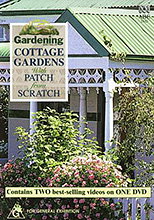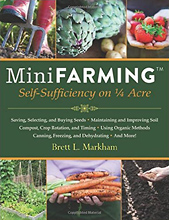
|
|
Growing Trees for ShadeIf you are currently trying to plant trees in order to shade your garden, you will probably want something that grows very fast and provides plenty of shade. With the many types of trees available, you will have no problem finding a variety that will grow extremely fast and provide all the shade that your garden needs to survive. There are also many things you can do to speed up the growth of trees. Generally trees are separated into two categories: long lived and short lived. If you are just looking for some temporary shade for your garden, you should stick to a short lived tree. But if you plan on keeping it for years, go for a long lived tree. If you decide on a short lived plant, you are probably looking for something with speedy growth. This means the root system will be particularly aggressive, so be sure not to place it near any septic tanks or other deep rooted plants. If the roots have plenty of area to grow, then they will shoot out extremely fast and your tree will take off in growth. Your placement should also be based on the tree’s relative position to the area you are wanting to shade. You should keep it to the western or southern sides for maximum shading. Preparing your soil well for the shade trees can be the best way to enhance the plant growth speed. The bigger hole you dig for the root ball, the better. Also when you dig out the soil from the hole, you should work it over well before you replace it. This will allow the roots to penetrate through the soil better. If you mix in all your fertiliser and nutrients to the soil before you replace it, you will end up with a superior tree. Also try to use organic materials as mulch. Bark and any branches or twigs work well for this, and will encourage the quick growth. When you buy your shade tree, it will usually come with the root ball balled up and in a burlap bag. It might also be grown in a container or simply with bare roots. If you get a tree in a burlap bag, you should plant it anywhere between fall and early spring. Trees grown in containers are ok to plant at almost any time of the year. If the tree just has bare roots, then the ideal planting time is anytime in winter and early spring. If you buy a tree that has been grown in a container, make sure that the roots are not constricted by the container. This will usually cause the roots to go in circles underground after you plant it. After you buy the tree and before you plant it, be sure to constantly add moisture to it. The ideal planting process would include putting it in the ground at the proper depth, and replacing the soil without compressing it too much. Immediately after planting, you should give the tree its first watering before putting the layer of mulch on. You should always use organic mulch, and have a 2 or 3 inch layer of it at the base of your tree. You should always use nitrogen fertiliser during the first segment of the tree’s life. Simply follow the instructions on the label in order to find out exactly how much to apply and when to apply it. Never apply too much fertiliser while the tree is young. You should usually wait until it has been established for about a year. The fertiliser that you do add should be sufficiently watered down. If you are trying to grow a tree speedily, there are many more things that you need to consider. However, with proper planning you can create the perfect environment for the tree to spring right up and provide you with plenty of shade within months. Recommended ViewingRecommended Reading
See AlsoSustainable Organic Farming Content is copyright © Survival.org.au 2005-2025 All Rights Reserved. Terms of Use. Definitely read the disclaimer before trying anything from this website, especially including the practices and skills. This website uses affiliate links – this doesn't cost you any more, but I get a commission on purchases made through the website. As an Amazon Associate I earn similarly from qualifying purchases. |
|


